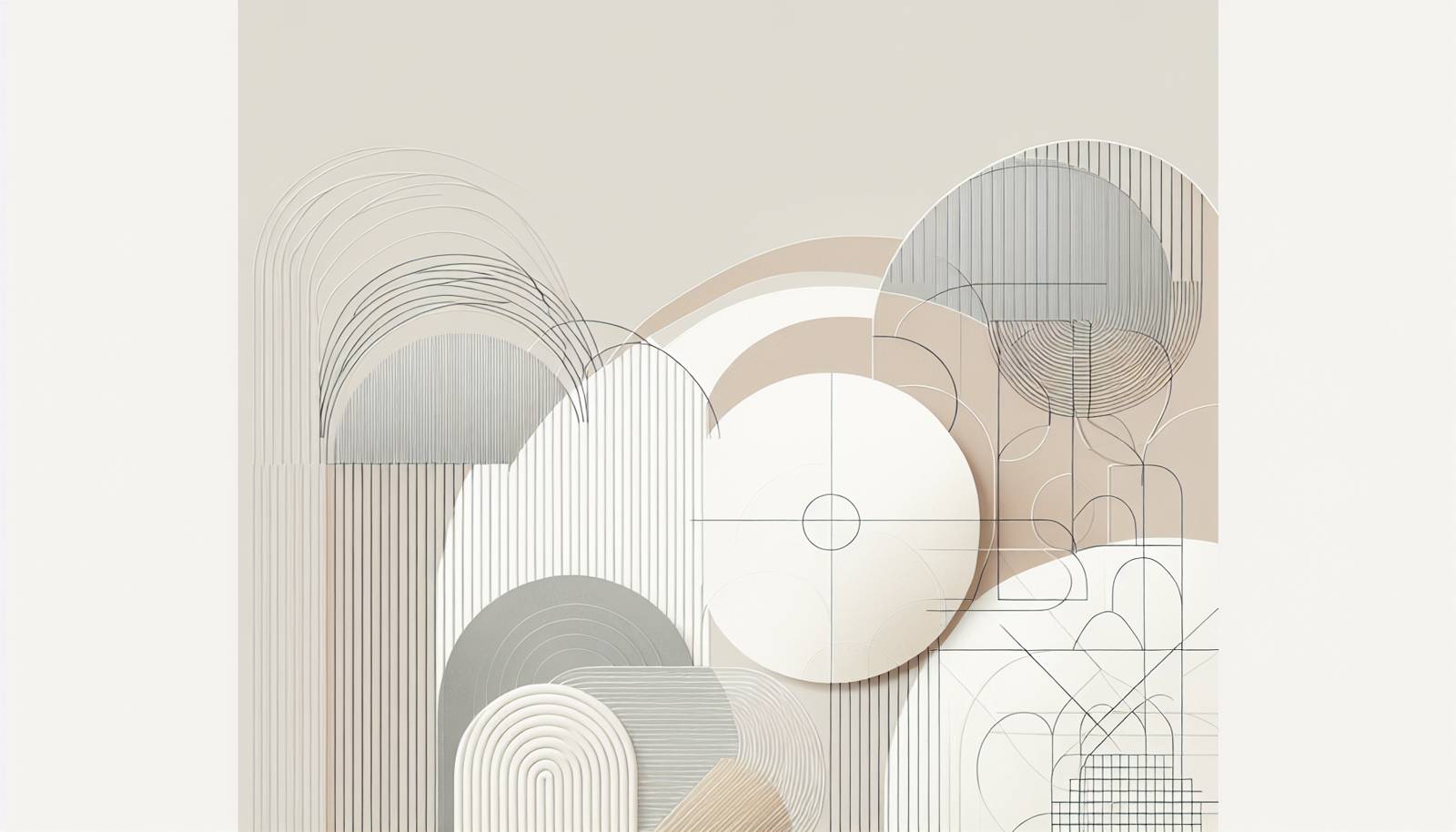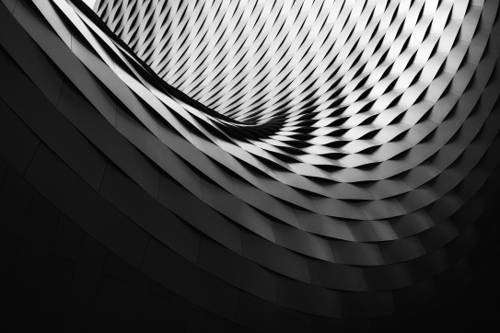
FAQ About The Influence of Abstract Art on Modern Architecture

What is abstract art and how does it relate to architecture?
Abstract art is a style of visual art that uses shapes, colors, forms, and gestural marks to achieve its effect, rather than attempting to accurately depict visual reality. In architecture, it has influenced the way spaces are conceived and designed, moving away from traditional, realistic structures to more fluid and dynamic forms that resemble abstract art pieces. This influences the appearance, functionality, and perception of modern architectural works.

When did abstract art begin influencing modern architecture?
The influence of abstract art on modern architecture began in the early 20th century. Pioneers like Le Corbusier were inspired by abstract forms to create functional yet aesthetically dynamic structures. The connection grew stronger during the Bauhaus movement, where the lines between art and architecture were intentionally blurred, fostering innovative architectural designs that emphasized form, function, and abstract aesthetics.

Can you name an architect known for integrating abstract art into their designs?
Frank Gehry is a prominent architect known for integrating abstract art into his architectural designs. His works, such as the Guggenheim Museum in Bilbao, utilize abstract forms and shapes to create visually striking buildings. Gehry's designs often challenge conventional architectural norms, reflecting the freedom and expression found in abstract art.

How does abstract art inspire innovative design concepts in architecture?
Abstract art inspires innovative design concepts in architecture by encouraging architects to move away from conventional symmetry and balance. It promotes the use of unexpected shapes, nontraditional materials, and novel textures to create spaces that evoke emotion and interpret space beyond functionality. Architects often draw inspiration from the fluidity, dynamism, and conceptual depth found in abstract art to create structures that captivate and provoke thought.

What are some examples of abstract art influences in contemporary architecture?
Contemporary architecture features several examples influenced by abstract art, including the Bilbao Guggenheim Museum by Frank Gehry, The Dancing House by Vlado Milunić and Frank Gehry in Prague, and the Walt Disney Concert Hall in Los Angeles. These buildings exhibit the use of abstract forms, unusual geometries, and innovative use of space and materials, reflecting the ideals of abstract art.

Why is abstract art significant in shaping urban landscapes?
Abstract art is significant in shaping urban landscapes because it challenges traditional design conventions and encourages the exploration of new forms and aesthetics. This results in unique architectural designs that can redefine the skyline, promote cultural identity, and inspire communities. The integration of abstract art in architecture has led to more engaging and stimulating environments that reflect the diversity and creativity of a city’s culture.

In what ways does abstract art affect the functionality of modern architecture?
Abstract art affects the functionality of modern architecture by blending artistic expression with structural innovation. While abstract forms may prioritize aesthetic over tradition, these designs often incorporate advanced engineering solutions to maintain or enhance functionality. This includes optimizing natural light, improving energy efficiency, or creating multifunctional spaces that enhance the user's experience as part of the overall aesthetic and functional synergy.

How does the Bauhaus movement link abstract art to architecture?
The Bauhaus movement, founded in Germany in 1919, played a crucial role in linking abstract art to architecture. It emphasized the unity of art and technology, encouraging collaboration among artists, craftspeople, and architects. Bauhaus practitioners like Walter Gropius and Ludwig Mies van der Rohe incorporated abstract art principles into their designs, focusing on minimalism, functionalism, and the abstraction of forms to foster innovative and expressive architectural works.

Does abstract art in architecture have any practical benefits?
Abstract art in architecture offers several practical benefits. It encourages the use of creative design solutions that can lead to improved space utilization, enhanced aesthetics, and increased environmental efficiency. Abstract designs can also foster unique identity and branding for buildings, making them landmarks or cultural symbols within a city. Moreover, they provide greater adaptability in design, accommodating diverse needs and uses while promoting cultural and artistic expression.

What role do geometric forms from abstract art play in modern building design?
Geometric forms from abstract art play a significant role in modern building design by offering alternatives to conventional shapes like rectangles and squares. Architects use polygons, curves, and free-form compositions to create unique and distinctive buildings that challenge traditional spatial perceptions. These geometric deviations can lead to more dynamic spaces that evoke emotion and encourage interaction, reflecting the conceptual foundations of abstract art.

Are there any notable buildings influenced by Piet Mondrian's abstract art?
Buildings influenced by Piet Mondrian's abstract art typically feature grid-like patterns and bold primary colors, similar to his iconic style. Mondrian's influence can be seen in structures such as the Rietveld Schröder House in the Netherlands, designed by Gerrit Rietveld, which embodies the De Stijl principles Mondrian championed. This approach is characterized by the use of asymmetrical balance and color to create visually harmonious design.

How do abstract art principles manifest in postmodern architecture?
In postmodern architecture, abstract art principles manifest through eclectic styles that incorporate elements like bright colors, unusual materials, and whimsical forms. Architects of this era often blend high and low culture references, experimenting with mixed media and abstract designs to create buildings that challenge conventional aesthetics. This approach reflects the complexity and diversity inherent in abstract art, translating its conceptual depth and emotive power into built environments.

Does abstract art in architecture influence interior design?
Yes, abstract art in architecture significantly influences interior design by shaping the spatial forms, layout, and aesthetics of interiors. Designers often draw on abstract art to create dynamic and engaging interiors that resonate with the building's external architecture. This influence can be seen in the use of abstract patterns, bold colors, and innovative materials that enhance the interior ambiance and reflect the overall artistic vision of the building.

How does the use of color in abstract art influence architectural design?
The use of color in abstract art influences architectural design by guiding emotional and psychological responses to spaces. Architects use color to define areas, influence mood, or highlight structural features, creating visual narratives that transform the experience of the built environment. Inspired by abstract art, colors in architecture may serve both functional purposes, such as improving natural lighting, and aesthetic purposes, enhancing the overall vibrancy and identity of a structure.

Is there a connection between abstract expressionism and architecture?
Abstract expressionism, known for its emphasis on dynamic, expressive forms, shares a conceptual connection with architecture in embracing innovation and visual aesthetics. Architects inspired by abstract expressionism focus on creating spaces that facilitate movement and emotional engagement. They may adopt expressive structural elements, fluid spatial arrangements, and unconventional materials that evoke the energy and spontaneity characteristic of abstract expressionist art.

How do architects balance functional needs with abstract artistic influences?
Architects balance functional needs with abstract artistic influences by integrating innovative design solutions that address practical requirements while pursuing creative expression. They often leverage modern engineering techniques, sustainable materials, and advanced technology to ensure that the building is both livable and visually striking. Architectural designs inspired by abstract art must harmonize form and function, ensuring usability without compromising artistic intent.

What impact has abstract art had on sustainable architecture?
Abstract art has impacted sustainable architecture by inspiring innovative approaches that emphasize both beauty and environmental responsibility. Architects are encouraged to explore organic forms and unconventional materials that can lead to energy-efficient designs, natural ventilation systems, and harmony with the landscape. Abstract art encourages reconsidering standard practices, promoting creativity in sustainability through aesthetically appealing, functional spaces.

How do architects draw inspiration from both historical and abstract art for modern designs?
Architects draw inspiration from both historical and abstract art by blending traditional architectural elements with contemporary abstract influences. This synthesis allows for the creation of a dialogue between the past and present, respecting historical context while incorporating abstract concepts like minimalism, abstraction, and dynamic forms. This complex layering results in unique modern designs that are culturally rich and aesthetically compelling.

What are the challenges of integrating abstract art into architectural design?
Integrating abstract art into architectural design presents challenges such as maintaining structural integrity while pursuing unconventional forms, addressing functionality without detracting from aesthetic appeal, and balancing budget constraints with innovative artistic vision. Architects must also ensure that these designs meet regulatory standards and achieve practicality without diluting the abstraction and creativity of the art that inspired them.

Can you provide an example of a city that embodies abstract art influences in its architecture?
Barcelona is a city that embodies abstract art influences in its architecture. The city is home to Antoni Gaudí's iconic works such as the Sagrada Família and Park Güell, which demonstrate abstract and artistic forms challenging conventional design norms. Barcelona’s architectural landscape is marked by the seamless integration of abstract forms, vibrant colors, and organic shapes, making it a prime example of how abstract art influences urban architecture.
